The 4004 CPU was the forerunner of all of today’s Intel offerings and, to date, all PC processors have been based on the original Intel designs. The first chip used in an IBM PC was Intel’s 8088. This was not, at the time it was chosen, the best available CPU, in fact Intel’s own 8086 was more powerful and had been released earlier. The 8088 was chosen for reasons of economics: its 8-bit data bus required less costly motherboards than the 16-bit 8086.
Also, at the time that the original PC was designed, most of the interface chips available were intended for use in 8-bit designs. These early processors would have nowhere near sufficient power to run today’s software.
- Best all-rounder performance CPU: Intel Core i5-10600K. The Intel Core i5-10600K is the Intel CPU I am most likely to recommend to enthusiast system builders who do not have a limitless budget.
- For an informative overview of Intel processor history, view 'The Evolution of a Revolution.' (PDF 2.9MB - this file is for historical reference only and is not kept updated beyond 2008) This page is for historical reference only. For products introduced after December 2008.
Sandy Bridge is the codename of the microarchitecture of processor developed by Intel. Intel demonstrated its first sandy bridge processors in 2009 and released in 2011 to replace its older processor named Nehalem. While Nehalem was based on 45 nm manufacturing technology, it uses planar double gate transistors.
The table below shows the generations of processors from Intel’s first generation 8088/86 in the late 1970s to the eighth-generation AMD Athlon 64, launched in the autumn of 2003:
Chronological Evolution of CPUs
| Type/ Generation | Year | Data/ Address bus width | Level 1 Cache (KB) | Memory bus speed (MHz) | Internal clock speed (MHz) |
|---|---|---|---|---|---|
| 8088/ First | 1979 | 8/20 bit | None | 4.77-8 | 4.77-8 |
| 8086/ First | 1978 | 16/20 bit | None | 4.77-8 | 4.77-8 |
| 80286/ Second | 1982 | 16/24 bit | None | 6-20 | 6-20 |
| 80386DX/ Third | 1985 | 32/32 bit | None | 16-33 | 16-33 |
| 80386SX/ Third | 1988 | 16/32 bit | 8 | 16-33 | 16-33 |
| 80486DX/ Fourth | 1989 | 32/32 bit | 8 | 25-50 | 25-50 |
| 80486SX/ Fourth | 1989 | 32/32 bit | 8 | 25-50 | 25-50 |
| 80486DX2/ Fourth | 1992 | 32/32 bit | 8 | 25-40 | 50-80 |
| 80486DX4/ Fourth | 1994 | 32/32 bit | 8+8 | 25-40 | 75-120 |
| Pentium/ Fifth | 1993 | 64/32 bit | 8+8 | 60-66 | 60-200 |
| MMX/ Fifth | 1997 | 64/32 bit | 16+16 | 66 | 166-233 |
| Pentium Pro/ Sixth | 1995 | 64/32 bit | 8+8 | 66 | 150-200 |
| Pentium II/ Sixth | 1997 | 64/32 bit | 16+16 | 66 | 233-300 |
| Pentium II/ Sixth | 1998 | 64/32 bit | 16+16 | 66/100 | 300-450 |
| Pentium III/ Sixth | 1999 | 64/32 bit | 16+16 | 100 | 450-1.2GHz |
| AMD Athlon/ Seventh | 1999 | 64/32 bit | 64+64 | 266 | 500-2.2GHz |
| Pentium 4/ Seventh | 2000 | 64/32 bit | 12+8 | 400 | 1.4GHz-3.6GHz |
| AMD Athlon 64/ Eighth | 2003 | 64/64 bit | 64+64 | 400 | 2GHz-2.4GHz |
A microprocessor (sometimes abbreviated µP) is a digital electronic component with transistors on a single semiconductor integrated circuit (IC). One or more microprocessors typically serve as a central processing unit (CPU) in a computer system or handheld device.
Microprocessors made possible the advent of the microcomputer. Before this, electronic CPUs were typically made from bulky discrete switching devices (and later small-scale integrated circuits) containing the equivalent of only a few transistors.
By integrating the processor onto one or a very few large-scale integrated circuit packages (containing the equivalent of thousands or millions of discrete transistors), the cost of processor power was greatly reduced. Since the advent of the IC in the mid-1970s, the microprocessor has become the most prevalent implementation of the CPU, nearly completely replacing all other forms.


Various microprocessors |
The evolution of microprocessors has been known to follow Moore's Law when it comes to steadily increasing performance over the years. This law suggests that the complexity of an integrated circuit, with respect to minimum component cost, doubles every 24 months. This dictum has generally proven true since the early 1970s.

From their humble beginnings as the drivers for calculators, the continued increase in power has led to the dominance of microprocessors over every other form of computer; every system from the largest mainframes to the smallest handheld computers now uses a microprocessor at its core.
Evolution Of Intel Processors Ppt

Microprocessors have impacted every type of computer that we use in our daily lives, from students studying for their bachelor degree online the ability do so anywhere at any time, to being able to find your travel destination with a GPS.
I9-10910
Without the introduction of microprocessors the computers we now have in our homes and even the one on your adjustable desk in your office would be vastly inferior to what we are accustomed to today. Simple tasks such as browsing the web and using word processors would be a monumental task.
History of the Microprocessor
I9-10900
The first microprocessors
Evolution Of Intel Cpu
As with many advances in technology, the microprocessor was an idea whose time had come. Three projects arguably delivered a complete microprocessor at about the same time, Intel's 4004, Texas Instruments' TMS 1000, and Garrett AiResearch's Central Air Data Computer.